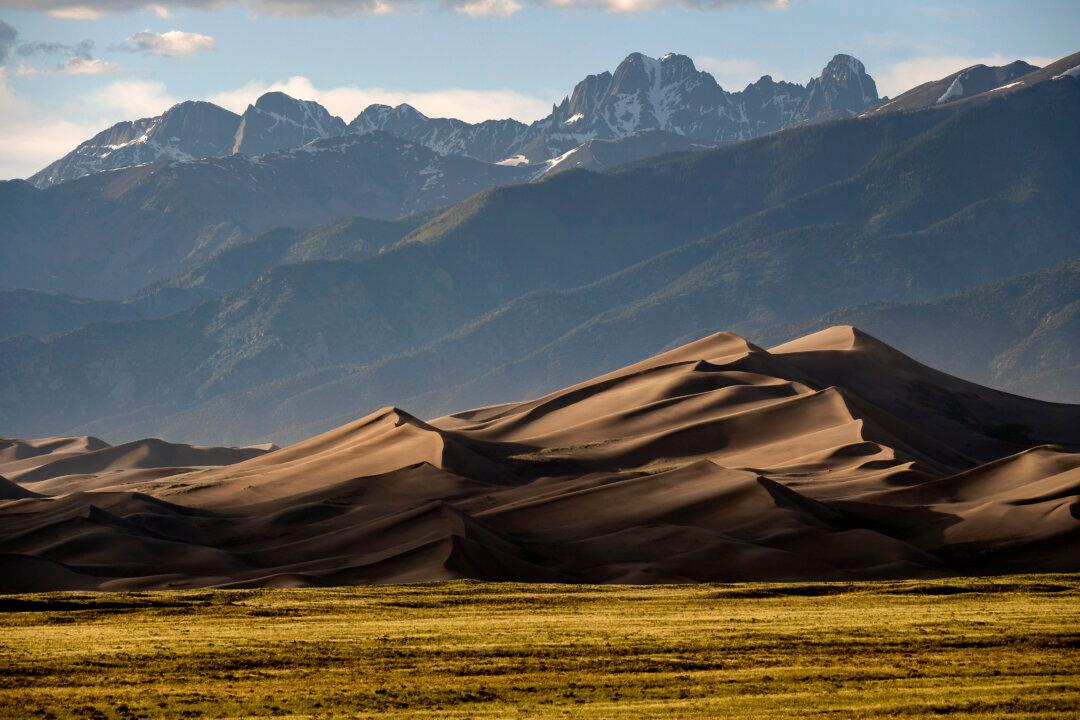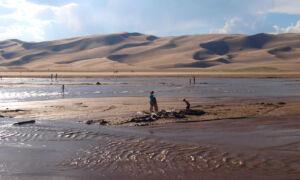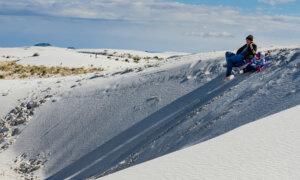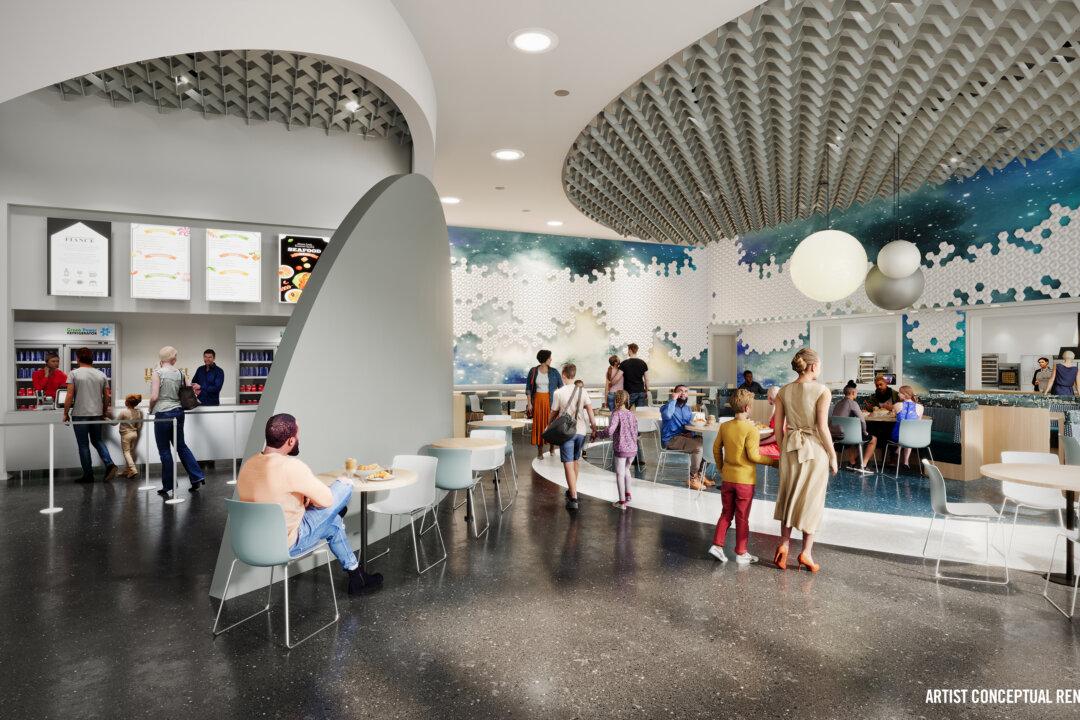DENVER—Explosive growth in visitation at Great Sand Dunes National Park and Preserve over the past eight years has reached a point where park officials say they need to improve the visitor experience, starting with increasing parking and relieving traffic congestion.
“Current conditions are not acceptable,” said park superintendent Andrea Compton. “They’re not safe. We’re seeing resource damage. Ultimately, we need to figure out an alternative. Right now we’re looking for, ‘What are the public’s ideas of some things we can do?'”
Since parking lots at Colorado’s second-busiest national park fill up quickly, one of the biggest problems is visitors parking along roads, creating pedestrian traffic on roadways and raising safety concerns. So park officials are proposing new parking lots and other infrastructure improvements.
They have outlined their “initial proposed ideas,” made the plan available for public perusal, and are inviting public input. A 30-day comment period runs through March 29.
From the late 1980s through 2015, annual park visitation averaged just under 274,000 people per year. Since 2016, though, average annual visitation has increased 73 percent to 489,436. The park record of 602,613 was set in 2021, and visitation surpassed 500,000 in 2019 and 2023.
Park officials believe growth in the park’s popularity was driven in part by the centennial celebration of the National Park Service in 2016, which coincided with the initial visitation surge, as well as the pandemic in 2020. Colorado’s population growth presumably played a role as well. About 40 percent of the park’s visitors come from Colorado, Compton said.
“It really is an explosion,” Compton said. “And we’re happy for the explosion. I think the National Park Service Centennial had a big role in raising awareness about Great Sand Dunes National Park and Preserve, as well as (other) sites across the nation.”
But that has “added some extra stressors, extra points of concern,” she continued, “and that is exactly why we are starting this process with the Transportation and Transit Plan.”
The park’s two main attractions are the famous dunes, the tallest in North America, and Medano Creek, which flows in a torrent every spring to the delight of families who come to play in its waves. Unlike trail networks at other parks which tend to concentrate crowds, the wide-open dunes and creek disperse visitors—once they overcome the hassle of finding a place to park.
“Most visitors do not feel crowded with current use levels while recreating at Medano Creek and the nearby dunes,” the park’s informational PowerPoint states, even though those two areas attract 85 percent of the park’s visitors.
“I’ve heard Medano Creek (called) ‘Colorado’s beach,'” Compton said. “People are coming here and they’re expecting to be with a lot of other people. But, if they want some space, there’s definitely room to do that. If they want a little bit more isolation they can move further upstream or downstream. The same with the dunes. If they want a remote experience, they can go further back into the wilderness area. That’s one of the things that’s special. It can provide such a range of experiences.”
That’s why the focus is on transportation instead of something like timed-entry reservations, which nine national parks have implemented to one degree or another following the lead of Rocky Mountain National Park in 2020.
“The dunes parking lots fill up by mid-morning on busy weekends in the summertime,” Compton said. “Then we start to guide people to park along the edge of the roads, and there’s not a very good shoulder there. Then, to get to the dunes, people take their gear and their families and they start walking down the road, right where the traffic is going. That’s a big safety concern for us.”
Initial proposed ideas include improvements at the park entrance, better pull-out areas, four new parking lots along Medano Creek Road and a new dunes parking lot.
“On weekends, it can be well over an hour for people to get into the park, so we’re not serving our visitors well,” Compton said. “We’re not giving them the best experience that we want to give them. Part of this is looking at that and trying to think about how we serve the public better.”
Public meetings were held this week in two towns near the park, Alamosa and Crestone. After the current “civic engagement” period, park officials will refine the concept, identify potential environmental impacts, release a proposed plan for more public comment and release the final plan. A draft environmental assessment likely will be released for public review next fall.
The public can comment on the park’s website or mail their input to the Great Sand Dunes Visitor Center, Attn: Transportation and Transit Planning, 11999 State Highway 150, Mosca, CO 81146.








